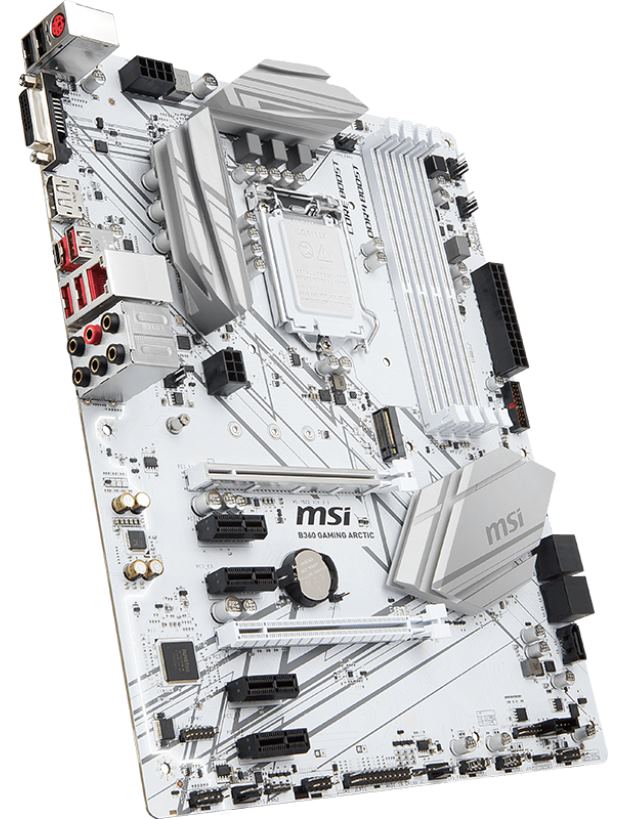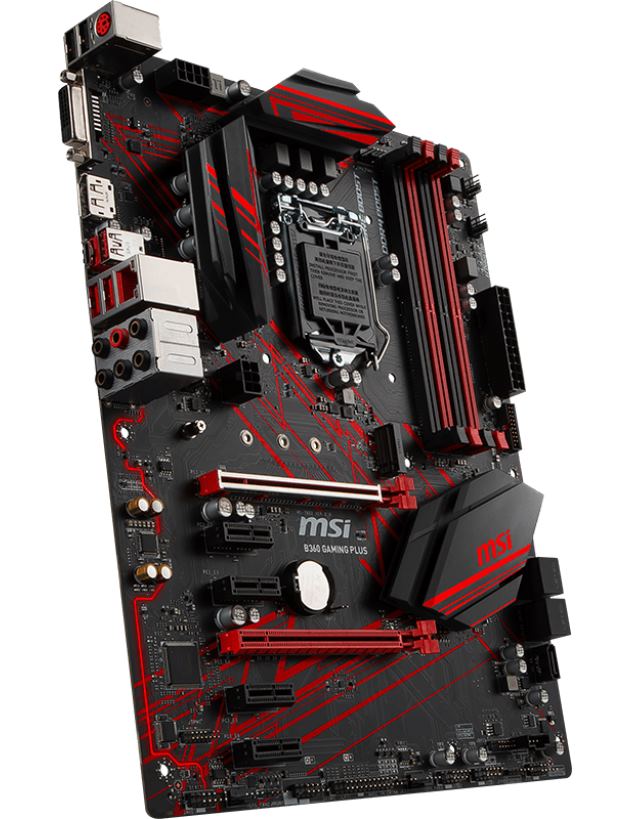MSI B360 Gaming Plus & B360 Gaming Arctic Review: Fraternal Twins On The Cheap
by Joe Shields on August 27, 2018 8:00 AM EST- Posted in
- Motherboards
- MSI
- Coffee Lake
- i7-8700K
- B360
Conclusion
The B360 Gaming Plus and B360 Gaming Arctic offer users a wide variety of modern interfaces and features, including an M.2 slot and USB 3.1 ports, allowing users access to the latest and greatest even on a more mainstream chipset. The biggest sacrifice when using any board based on this chipset will be the lack of overclocking ability. Most anything else will find its way onto a B360 board, and ultimately will often be a good bit cheaper than its Z370 counterparts.
MSI's two B360 boards, in turn, end up being a good fit for anything from general computing to hardcore gaming, even allowing for AMD Radeon Crossfire configurations (SLI is not supported). The single Intel Gigabit NIC will happily pipe through any packets users can throw at it. The Realtek ALC892 audio isn't the latest or greatest but should prove to be at least adequate for most. The 7-phase power delivery system performed as expected, handling the 95W i7-8700K without issue. The VRM is admittedly not the most robust we have seen, but it doesn't need to be considering the platform does not overclock.
The overall performance on both the Gaming Plus and Gaming Arctic mixed right in with the other Z370 and B360 boards. Power consumption in idle states was better than most other boards tested, and load voltage was on par, mingling in with the other results. Gaming results, like the CPU tests, were not out of the ordinary. POST times were the 2nd quickest of all boards tested thus far, continuing a trend of the Z370/B360 boards getting through POST faster than the HEDT X299 platform results by far.
Consequently, both boards are strong contenders in the B360 motherboard space. MSI has put together a pair of solid motherboards that deliver on the core features most system builders need, but avoided making a board that is unnecessarily extravagant and expensive as a result. Which may sound like a backhanded compliment, but in fact it's not. These are the kinds of boards that are the bread & butter of stock system builds, the kind of systems where you pair them with a cheap Core i5 and then they quietly live out their lives for the next half a decade or more.
Otherwise, the fact that MSI offers the same board under two names with two different color schemes is a bit more unusual. However for better or worse, current pricing makes for an easy choice. The B360 Gaming Plus is currently sitting around $95, while the B360 Gaming Arcitc enjoys a $30 price premium, pushng the price up to $125. As the boards are functionally identical, the choice comes down to price and asthetics: either you want to pay extra for a white board, or you don't. I suspect most buyers are going to opt for the latter and invest the money elsewhere, but both options are there for those who want a more eye-catching board.













13 Comments
View All Comments
dennphill - Wednesday, August 29, 2018 - link
The white board (Arctic) looks very cool. It could be the basis of my next build...since I can get the B360 also in mATX size. (Didn't see that anywhere in the write-up.) Thank you for the review.EnzoFX - Thursday, August 30, 2018 - link
Need ITX version.EVADE - Friday, April 12, 2019 - link
how many RGB header does MSI B360 gaming arctic has?